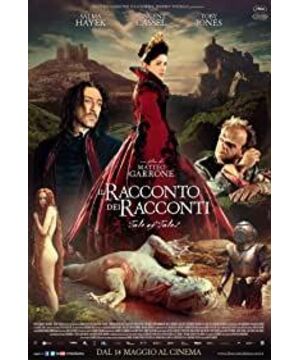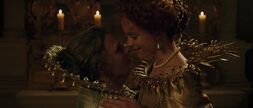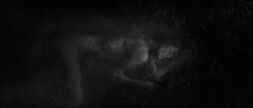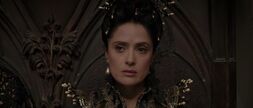First of all, the film is adapted from the collection of Neapolitan folktales "Five Days" written by the Italian Jim Bartista Basil, so the scene of the film should be in Italy. Secondly, from the five details of the film, it can be seen that the background of the film is the late Middle Ages. The first detail is the diving suit worn by the king when he fought against the sea monster. This high-tech product is only available in the Renaissance Italy. Finch designed it. The second detail is the funeral of the king who was injured and died in the battle against the sea monster. The clergy walking in front of the funeral procession held a Catholic cross in their hands. The third detail is that there are three small kingdoms coexisting in the film. , whenever a country organizes a wedding or a wedding, the kings of the other two countries will come to the scene in person, which is also in line with the historical background of the fragmented principalities of Italy in the Middle Ages! The fourth detail is the family dye house where the twins live. The almost uninterested business also symbolizes the decline of the Flanders wool industry. The fifth detail is the castle of the king who kept fleas as his pet, with an octagonal roof in the style of Italian imitation Romanesque architecture of the time.
Perhaps the director of the film also believed that the Middle Ages was the darkest period in Europe, so the three fairy tales were so dark that there was a tendency of "Childhood Purge". The names of the three small kingdoms are unknown, but I saw the names of three castles: Motherhood, Fatherhood, and Kingship. The castle of matriarchy looks bright, but under the castle is a labyrinth. The mother who intends to control the little prince chases her son in the name of love in the labyrinth and gets lost in the labyrinth of maternal love. The patriarchal castle stands majestically on the high mountains surrounded by plains. It is octagonal. The octagon is the totem change of the sun. The father is the sun. The definition of happiness is: Blessed are those who are persecuted for the sake of righteousness, and the kingdom is theirs for the kingdom of heaven.
In the film, this "righteousness" comes from the disheartened daughter: "Fear not, your obligation shall be respected. No one will be able to say that the king did not keep to his word". But it still comes from patriarchy: "Whatever I do is done well. No one has the right to question my will. Least of all my daughter". The king's castle overlooks the city on one side and the forest on the other. People and nature can be seen in the king's eyes. The prey in the forest belongs to the king. Similarly, the king can also go hunting in the city. escape.
In the end, the mother's power is still obsessed with no regrets, listening to the wizard, and being killed by the son, the father's power collapses with one kneeling in the incomparable remorse, and the king's power is a dream in the deception of magic.
Italians used the "Renaissance" to ignite the enthusiasm for humanism in the whole of Europe, while the director of this film used "Renaissance" to strip off the hypocrisy of human nature. There is no ugly foil, where can the hymn of truth, goodness and beauty come from?
Italian director Matteo Galloni's "Tale of Tales", the color of the picture is deeply influenced by Renaissance paintings, many screenshots are framed and placed in the Louvre Museum without any sense of incongruity paintings, which may have been influenced by his photographer mother.
View more about Tale of Tales reviews










